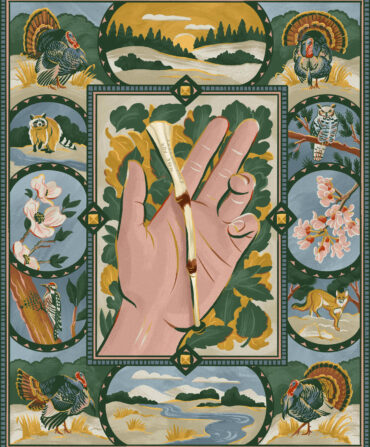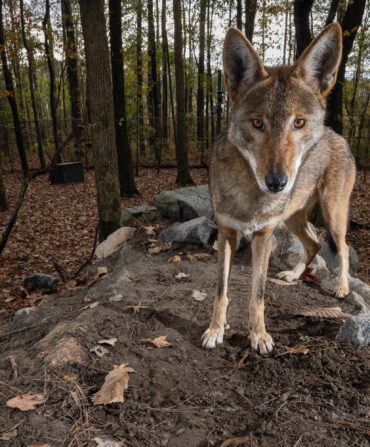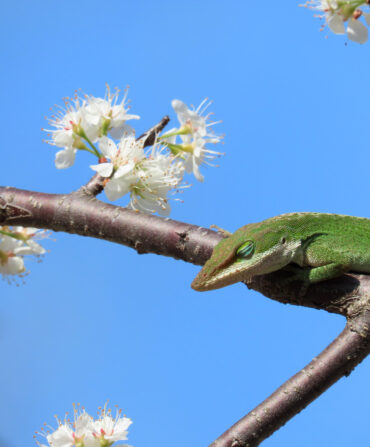Land & Conservation
Reclaiming a North Carolina Plantation
On a former plantation in Durham, a land conservancy and two determined sisters are pioneering a model for providing land to Black gardeners and farmers

Photo: KENNEDI CARTER
From left: Delphine Sellars; the old millhouse, soon to become a demonstration kitchen.
On August 11, 1865, an anxious Paul Cameron wrote in a letter to his father-in-law, “My old slaves seem resolved to hold on to me or to my lands.”
The wealthy North Carolina planter was determined to give them neither. In the months after the Civil War ended, a new reality emerged, anathema to his seigneurial sensibilities: having to negotiate with formerly enslaved workers whom he’d owned only months before.
The freedpeople who stayed on his plantation showed predictable signs of dissatisfaction. Cameron had enlisted a federal officer to tell them that they had absolutely no rights to the land they’d tended in captivity. When some laborers refused to work on Cameron’s terms, they faced eviction or cuts to their rations.
More than 150 years later, Delphine Sellars and her sister, Lucille Patterson, first set foot on one of the Cameron family plantations in Durham, called Snow Hill, knowing little about that dark history. Instead, Sellars cared about who owned the acreage in the present: Triangle Land Conservancy (TLC), a nonprofit that protects natural resources, which had agreed to consider letting the sisters use the land.
That day in 2016, the property sat in disarray. Massive trees were strewn about like a giant’s abandoned pickup sticks. The only road in and out became a car-stalling mud bath after rain. A two-story stable and other outbuildings stood dangerously dilapidated or encircled by brambles.
Sellars didn’t mind—she was envisioning what the onetime plantation, founded in the late 1700s and operated well into the twentieth century, could be. A former social worker who had headed Durham County’s extension office, Sellars had spent nearly a decade managing programs that helped home gardeners and farmers grow sustainable produce. Now she imagined a farm, where people could raise their own food and she could establish an incubator for new and future farmers through the nonprofit UCAN, short for Urban Community AgriNomics, which the sisters had recently launched to encourage gardening and fight food insecurity. “I was giddy,” Sellars, who is sixty-nine, recalls. “It was gorgeous.”
Patterson—Sellars’s younger sibling by two years—saw something quite different: a nearly insurmountable cleanup job. “I looked at Delphine and said, ‘Have you bumped your head?’” UCAN had less than $300 in the bank. But they agreed on one point: They wanted land. And they’d have to persuade TLC to help them secure it.
Now the sisters are on the cusp of finally fully getting their wish—not just to lease the spread, as they have the past five years, but for their nonprofit to own and manage it, in a deal that could model for the national conservation movement how to easily redistribute land to Black institutions and individuals. In time, the sisters hope this seemingly radical move, which would be one of the nation’s largest transfers of land-conservancy property to an African American–led nonprofit, will spark other such organizations to let go of acreage they’ve stewarded, to boost land access among Black people in a country that’s benefited from their dispossession.
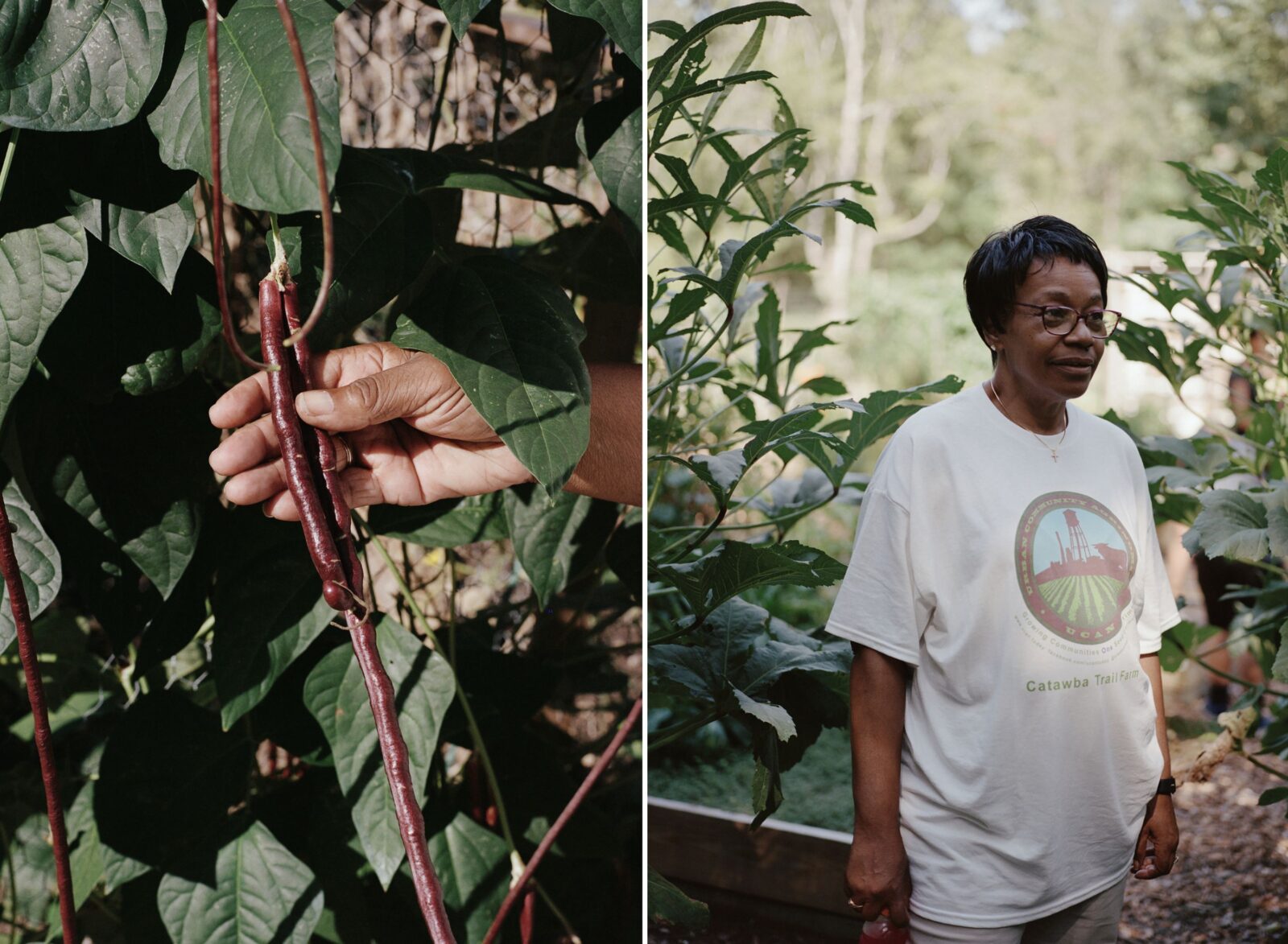
Photo: KENNEDI CARTER
From left: Yard-long beans at Catawba Trail Farm; Lucille Patterson.
On a winter morning, I meet Sellars on the old Snow Hill plantation grounds, near the Durham city line. She’s parked in her trusty pickup, multitasking on her cell phone as usual; there’s no office space yet. Still, the property—renamed Catawba Trail Farm—is a far cry from the neglected estate she saw on that 2016 tour.
When TLC first agreed to let Sellars and company use the land, the sisters and volunteers tried to clear it with good intentions and chain saws. That amateur attempt failed—“We thought we were going to be Paul Bunyan,” Patterson quips—but today there’s an air of organized industry here. The scent of sawdust drifts from the old millhouse, which they are transforming into a demonstration kitchen for canning classes and other lessons. Heaps of metal poles dot the ground, the puzzle pieces for a high-tunnel greenhouse; there, Sellars tells me, UCAN will grow, among other produce, peppers destined for a hot-sauce maker. She beams as she pulls a tarp from a sparkling “gently used” donated tractor, with fewer than a hundred hours of wear and tear. Soon, they will also clear a few acres of woodland to provide plots for new farmers in training.
The forty-seven raised beds that members rent for a hundred dollars a year lie mostly winter-dormant behind a deer fence. But come spring, they’ll bustle with gardeners like the high school visual arts teacher and mother of three Amber Carroll Santibañez. After Santibañez planted a home garden for her son’s birthday in remembrance of Ahmaud Arbery, the young Black man gunned down in 2020 by white men while he was jogging in Georgia, one of her students who helped with that healing project suggested she check out Catawba Trail Farm, where the pupil’s father volunteered. When Santibañez showed up, she recognized Patterson, who had been her boss at her first-ever job as a camp counselor decades ago.
“During the pandemic, and after [the births of] both my second and my third child, I have been managing postpartum anxiety,” says Santibañez, whose raised bed still has collards holding strong. “So the garden has been therapy.…During the summer, I [went] there every morning. It was a welcome task to go look for squash bugs and be with plants. You can find a lot of wisdom from nature.” She is now helping the farm create a children’s garden.
As I sit down with Sellars at a picnic table, she confides that she won’t be entirely comfortable until the ink on the farm’s land deal is dry. “We’re in a ‘Mother, may I?’ situation,” she says. “To get electricity, I need [TLC’s] permission. To get a well, I need permission.” And she’s not that kind of person. As she says later, “I’m a doer.”
When she’s at the farm, she’s always on the move, easily spotted by her long-legged stride and halo of white, close-cropped hair. By winter’s end, if all goes as planned, she’ll be able to make her own decisions with Patterson and other UCAN board members. Using a conservation easement, which restricts development rights and lowers property values, TLC plans to sell UCAN the fifty-three acres that currently compose Catawba Trail Farm, plus an additional 123 acres of adjoining land. Altogether, Sellars estimates, the parcel could easily go for $3 million in the hot Research Triangle real estate market. UCAN will get it for $37,000.
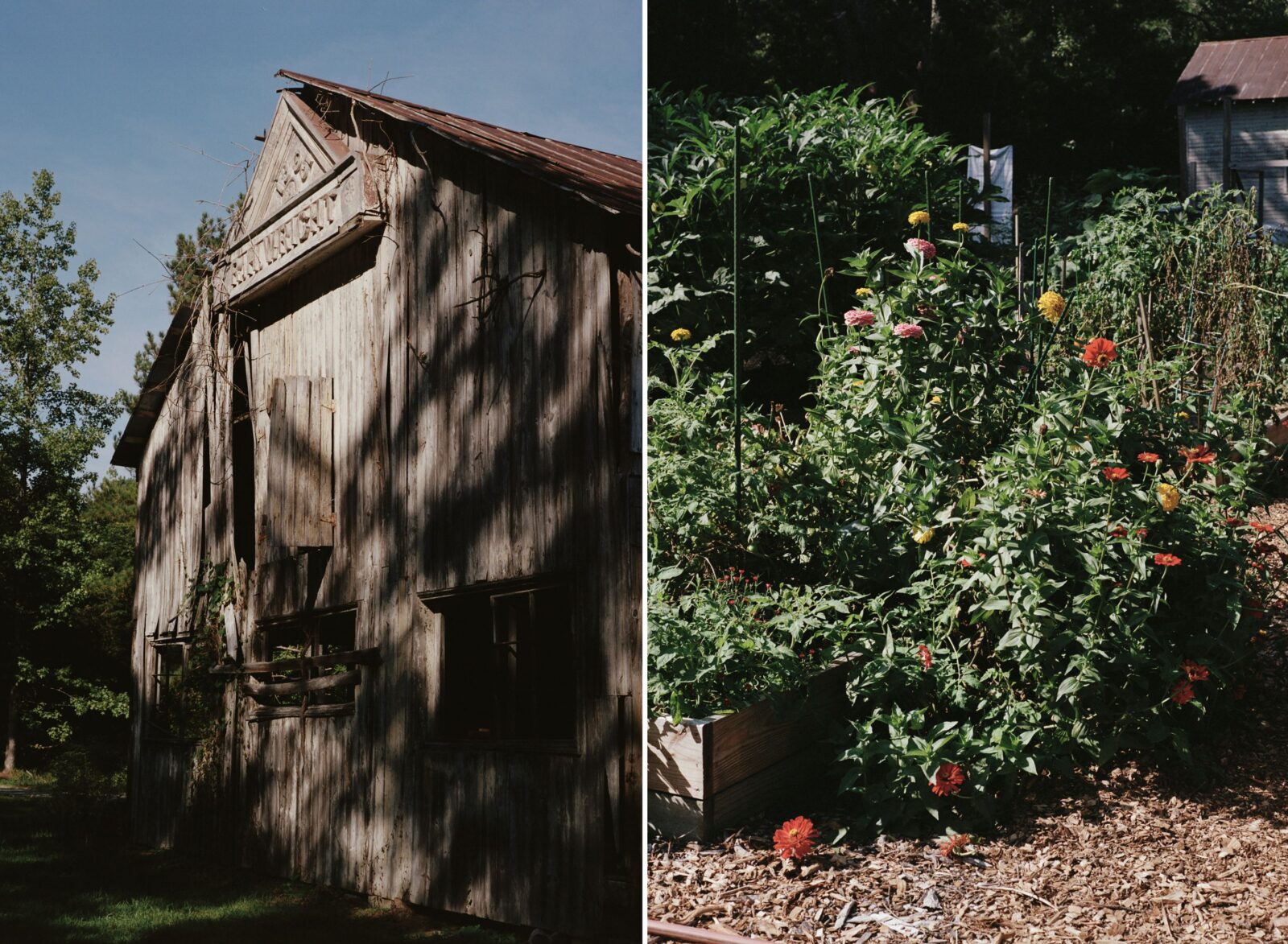
Photo: KENNEDI CARTER
From left: The farm’s millwright building; zinnias.
Before the United States even existed, the land on which Catawba Trail Farm lies stood out as valuable. Native Americans carved the Great Indian Trading Path through there, as it stretched down from modern-day Virginia into Catawba territory, ferrying fur and other goods along the route. In 1700, during his voyage through the area, the English explorer John Lawson noted that he’d never seen the likes of such “extraordinary rich Land.…The Savages do, indeed, still possess the Flower of Carolina.” That is, until English settlers began to receive huge swaths of land deemed otherwise “un-used” from the king and his colonial cronies. Absentee landowner Henry McCulloh reaped thousands of acres that included the Catawba Trail Farm spread. William Johnston—whose grave site in the farm’s woods is one of Durham County’s oldest-known resting places—then acquired the property in 1763. He opened the Little River Store, a place for travelers to buy sundries such as rum and Irish linen, on the Indian trail. After Johnston’s death, his partner, Richard Bennehan, opened yet another store and amassed money enough to purchase more land—and more enslaved people to cultivate it.
Eventually, Bennehan left the property to his son, Thomas, and his son-in-law, Duncan Cameron, both of whom willed the majority of it to Duncan’s son, Paul. By the 1860s, the younger Cameron and his siblings owned some thirty thousand acres in central North Carolina crossing five modern counties. Their holdings comprised four plantations, including Stagville (now a state historic site), and about a thousand enslaved people. Abner Jordan, who was born in Stagville’s bustling quarters, remembered that Cameron enslaved so many that he couldn’t recognize his own chattel if he met them while out walking his demesne: “When he ased dem who dey wus an’ who dey belonged to, dey tell him dey belonged to Marse Paul Cameron an’ den he would say dat wus all right for dem to go right on.” (Vera Cecelski, Stagville’s site manager, says that a wrong or seemingly impudent reply could earn that person a bash on the head, courtesy of Duncan Cameron and his cane.)
Reconstruction’s new order didn’t strip the Camerons of their power, much less their land. Even as freedpeople began to depart to try life elsewhere, the family still had their holdings, sway over sharecroppers with generational knowledge of that land, and investments in banking and railroads. Only some descendants of the formerly enslaved people that the Camerons had marched in the mid-1840s from North Carolina to the family’s Alabama plantation—a money pit with questionable soil—ended up with a share of the clan’s real estate. And they had to buy it.
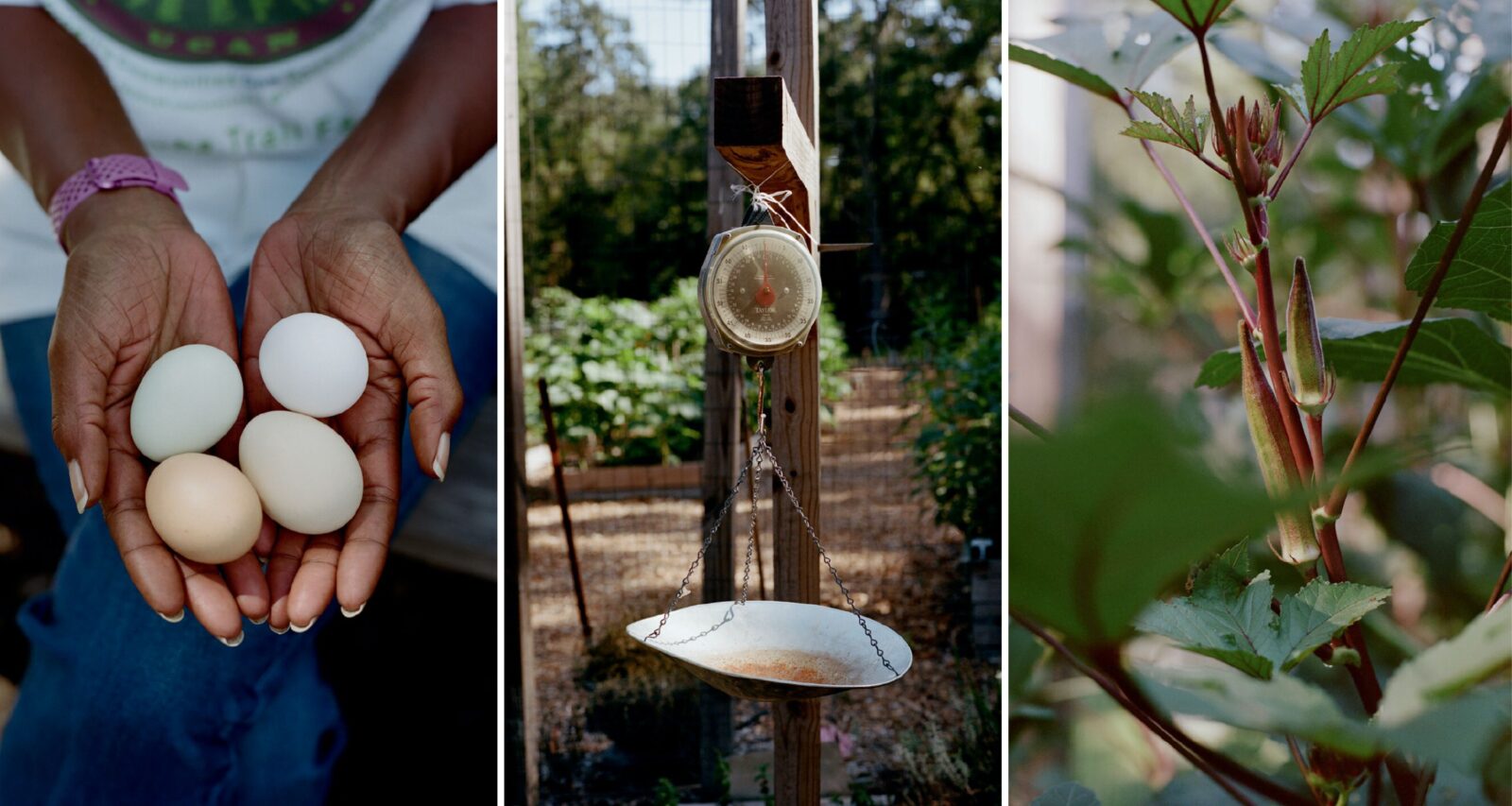
Photo: KENNEDI CARTER
From left: Fresh eggs; Catawba gardeners weigh their produce and log the data to help the nonprofit measure impact; a fruited okra plant.
Delphine Sellars and Lucille Patterson understand being landless. The sisters grew up outside Washington, North Carolina, two of ten siblings. Rest rarely came to the truck farm where they labored with their single mother, growing huge volumes of crops for local markets. The family weren’t sharecroppers per se, but they endured the endless slog of planting, tending, and harvesting the likes of melons, sweet potatoes, and squash over the course of North Carolina’s long growing year. When their mother bought a house, they found out later she possessed only a chattel deed to the structure, but not the land on which it sat.
Young Delphine and Lucille Godley craved a future without farming. College. City life. An indoor job. Each wound up in the Triangle; Sellars worked at the local employment office, then became a community outreach worker, and eventually earned a master’s in organizational management and became the director of Durham County’s extension department. Patterson worked a white-collar corporate job, then transitioned to run a community-center recreation program. Still, gardens sprouted in the sisters’ wakes: their own backyard patches, a church plot with ninety raised beds, at Patterson’s community center.
Thanks to Sellars’s role at the extension office, Triangle Land Conservancy asked her to serve on its board. As Sellars prepared to rotate off, she shared her hope to create community gardens on a large scale. “I was, like, ‘Oh, I’m sure we have property you could put raised beds on,’” recalls Sandy Sweitzer, TLC’s executive director, with a laugh. “I had no idea. I knew she had big plans,” but she didn’t quite understand the breadth of Sellars’s vision.
Then Sweitzer thought of Snow Hill. TLC had bought it at a reduced price from a developer, and the trust had plans to safeguard the waterways there that feed Raleigh’s municipal water supply and perhaps establish a nature preserve. Formalizing the first agreement that laid out how UCAN could use the property took a while. “We’d never done anything like this before,” Sweitzer explains. But the land trust had been paying attention to the way some New England trusts were using a “buy-conserve-sell” model. They’d purchase or otherwise obtain land, keep it for a short time and put easements on the property, and then sell it at below-market prices to young farmers struggling to find affordable property or loans.
TLC was also trying to address its lack of diversity, as well as that of Triangle land ownership. In 2012, the conservancy opened a nature preserve at Horton Grove, adjacent to the Stagville slave quarters, naming trails after the families who lived, loved, and labored there: Holman, Justice, Latta, Sowell, Walker, and others. The staff didn’t reflect the demographics of the six counties the nonprofit serves, so TLC also committed to racial equity training and a strategic plan that aimed for nearly half of its workers to be people of color.
Land conservancies, historically more focused on securing natural resources, haven’t always done their best to cultivate relationships with communities of color, says Forrest King-Cortes, the director of community-centered conservation at the Land Trust Alliance, a Washington, D.C., nonprofit that represents some 950 member trusts across the country, including TLC. “We’re doing our good conservation work to protect the birds and the bees,” he says, “but we haven’t talked to anybody across the street.”
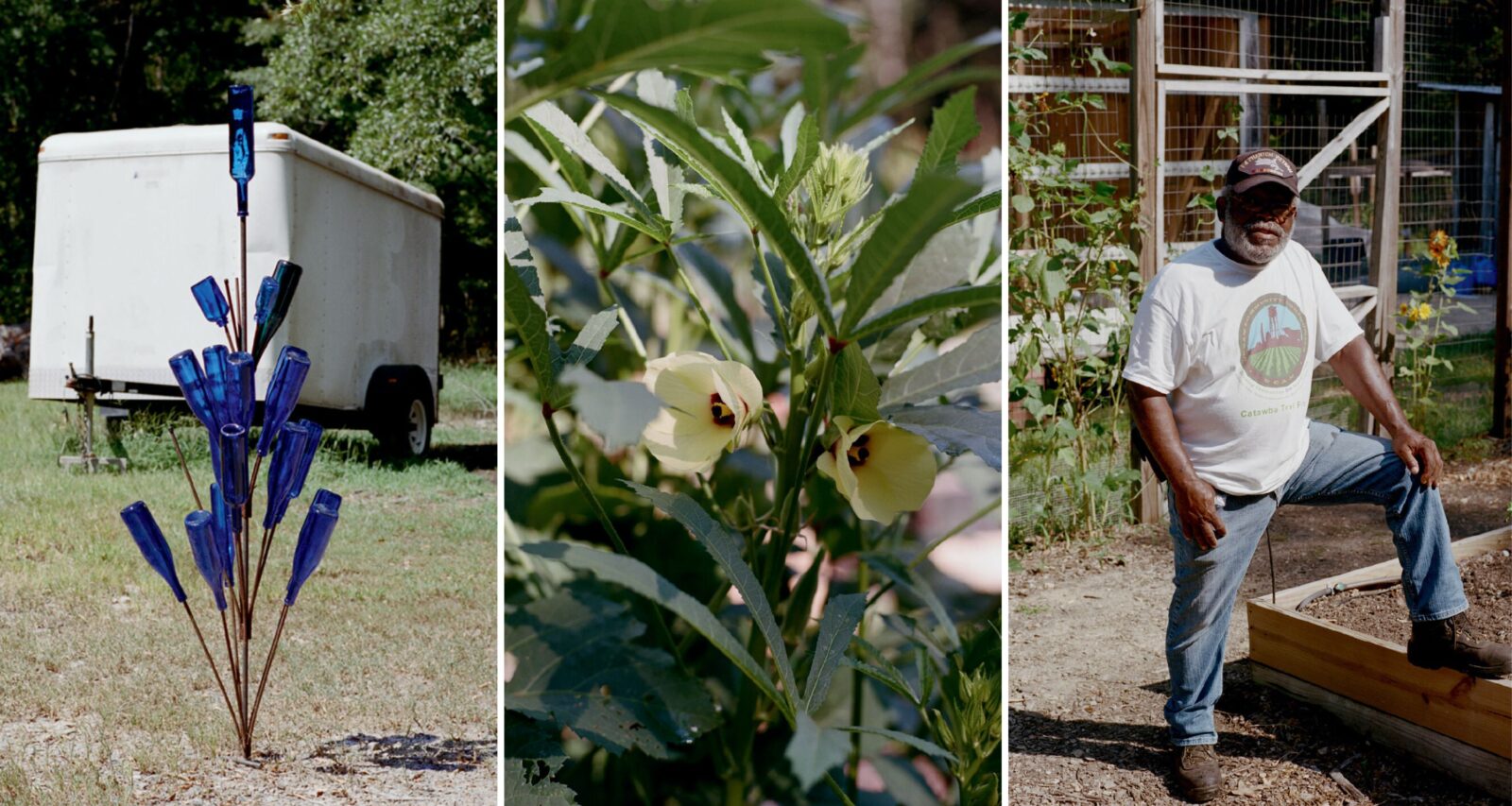
Photo: KENNEDI CARTER
From left: A bottle tree, to protect the garden by catching evil spirits, says Sellars, and “another way of sharing Black history”; blooming okra; community gardener Lilton Evans.
Those conversations are doubly hard when “we have ignored [a community] for forty years,” King-Cortes says—or ignored the dire statistic that Black farmers owned far less land in 2020 than they did in 1920 (and that 96 percent of U.S. farmland owners are white). Violence, lending and government discrimination, encroaching development, complicated inheritance issues, and general attrition have whittled down the numbers, even as land conservancies have blossomed. In North Carolina, about twenty-five land trusts have conserved approximately 400,000 acres of wetlands, forests, and other spaces. By contrast, the 2017 Census of Agriculture shows that farms with a Black principal then amounted to only 170,000 acres across the state.
TLC created an initiative called Good Ground to conserve more farmland while addressing inequity in land distribution, and the transfer of Catawba to UCAN will represent its first triumph. As easements go, it was a fairly complicated deal: The spread was purchased using state water conservation funds, with about 70 percent placed under a more restrictive easement to protect the area’s all-important Neuse River watershed. The other fifty-three acres, where Catawba Trail Farm lies, will be placed under a working lands easement to allow agriculture. Part of the property crosses city and county boundaries, adding to the bureaucratic hurdles.
TLC is not the first to try such redistribution, but deals that make land affordable for Black-led nonprofits aren’t common. And outside of this model, Black people have historically missed out on the benefits of conservation easements; many land trusts don’t even keep racial demographics on the parties involved, as they’re overwhelmingly white.
Levi Van Sant, a George Mason University human geographer, along with colleagues from the Universities of Georgia and South Carolina, has analyzed private easements in the Lowcountry to understand how they might impact environmental justice. Van Sant and his research partners found large concentrations of Black residents near private conservation easements. While easement neighbors can benefit from pristine natural resources, easements can also push development to these adjacent communities.
Black communities also rarely have the financial wherewithal and legal access needed to obtain conservation easements themselves, says Lillian “Ebonie” Alexander, the director of the Raleigh-based Black Family Land Trust (BFLT), one of the nation’s few trusts dedicated to preserving land owned by Black and other historically underserved people. “Nobody talks about easements to Black people,” Alexander says, partly because Black farms are often deemed too small to attract land trusts that want to nail down big swaths of territory. Trusts, Alexander says, “want to preserve hundreds of acres. Not five or twenty.” And it’s expensive work. She’s seen single acres in nearby Wake County go for $100,000. But she’s committed to helping Black Americans retain their land. Her organization’s working philosophy, called a “land ethic” after the doctrine of the Wisconsin conservationist Aldo Leopold, acknowledges the many meanings land holds for a people once condemned to work it under bondage. For the BFLT—and at Catawba—land isn’t just a source of the compounded traumas of slavery, sharecropping, migration, and food insecurity for Black Americans. It’s also a wellspring of pride, knowledge, economic power, and spiritual connection.
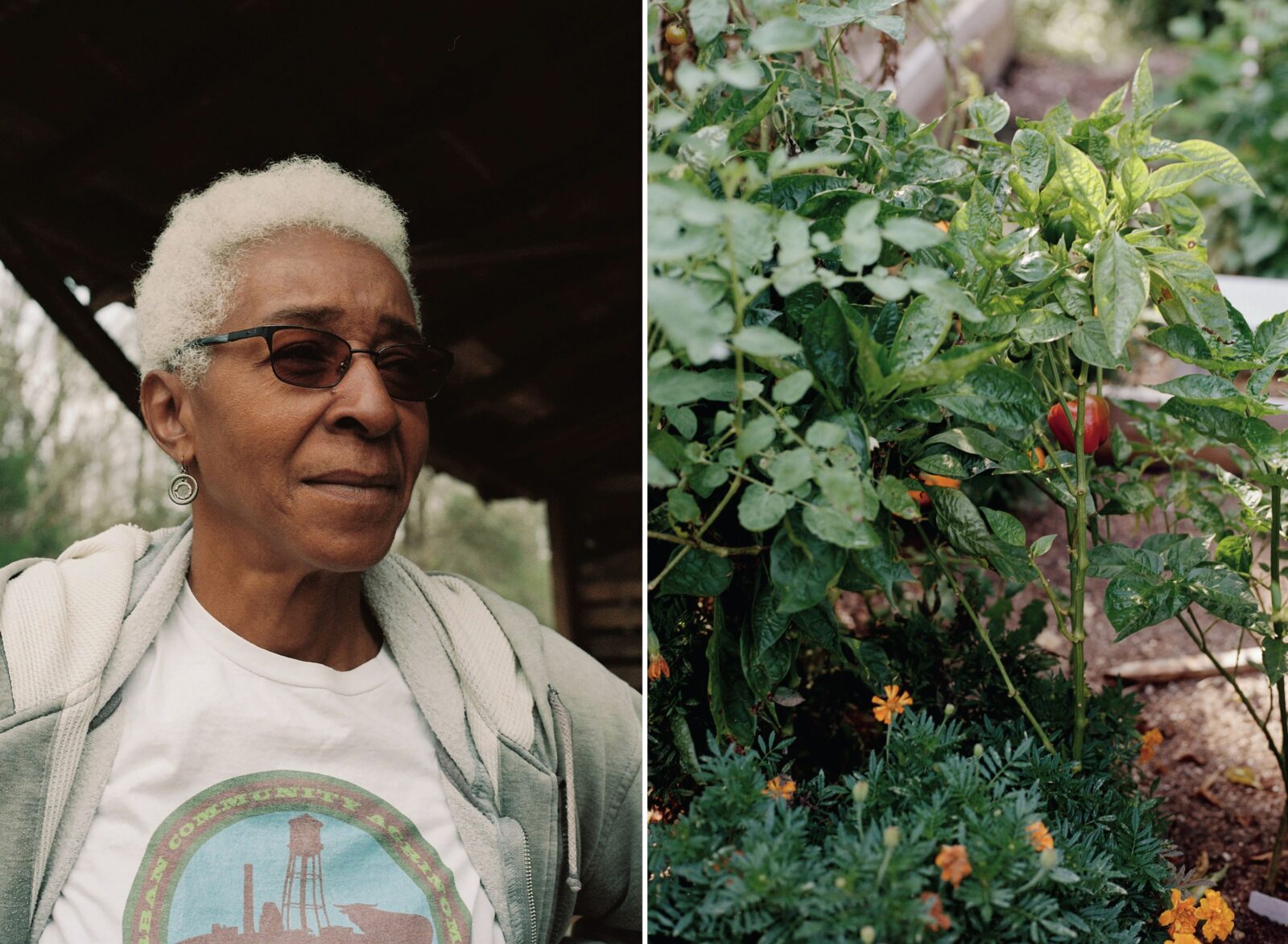
Photo: KENNEDI CARTER
From left: Sellars; hot peppers in the Catawba garden.
Catawba Trail Farm has its own land ethic based on collaborative work, intergenerational learning, and the idea that having food is an inalienable human right. People who rent raised beds there, including me, volunteer a couple of hours a month of general farm labor, such as helping harvest vegetables for the farm’s free food distribution. On Saturday open workdays, they grow community along with herbs and flowers.
At a chilly mushroom inoculation workshop this past winter, twenty participants formed an assembly line to lift and drill logs from the farm’s forest, stuffing the holes with spawn from oyster and lion’s mane varieties. The thirty-one-year-old creative director and curator Khayla Deans showed up ready in her puffy coat. In October 2021, she attended her first weekend workday at Catawba after seeing an online call for volunteers. “I just knew I needed to get my hands in the dirt,” she says, an opportunity she didn’t have while growing up in Philadelphia or now as an apartment dweller.
Minutes after she arrived, she recalls, an expert gardener named Lilton Evans—only ever referred to as Mr. Evans—exclaimed, “You’re new.” He walked her over to a bed full of garlic chives and asked, “Do you know what this is?” Evans, who is seventy-five and was raised on a farm in Southampton County, Virginia, urged her to smell and taste the fronds. Soon she was planting cucumbers, tomatoes, and yellow squash in her own little rectangle of soil. Afterward, she talked about the experience so much her mother half jokingly began to call her Farmer Khayla.
From Patterson, Deans gets plainspoken humor and a hearty “welcome home” after a break. Deans then listens to Sellars small-talking the chickens when Sellars hears their egg song and enters the coop. Together, they’ve ambled through the old trading path, looking at trees and discussing a visitation of hummingbirds.
Each sister teaches in her own way. Diplomatic Sellars is likely to tell a gardener not that they’ve got the wrong rake, but that there’s a better tool. Patterson, a skilled volunteer recruiter with a quick cackle of a laugh, keeps order—she won’t hesitate to warn a neglectful gardener that his or her plants need attention. Different though they might be, the sisters both believe they were meant to create Catawba Trail Farm. “Don’t you remember our maiden name?” Patterson asks. Godley.
They’ve received other portents, too. One day, Patterson took a picture of the garden from the millhouse. When she looked at the image, she saw a shadow of a person who wasn’t there: what looked to be a woman wearing an old-fashioned long dress, holding a staff or tool. Patterson believes it may have been a spectral visitor, one who might have worked in captivity at Snow Hill. The idea of an otherworldly presence comforts them all. “I think it’s a sign,” Patterson says, “we’re supposed to be here.”



